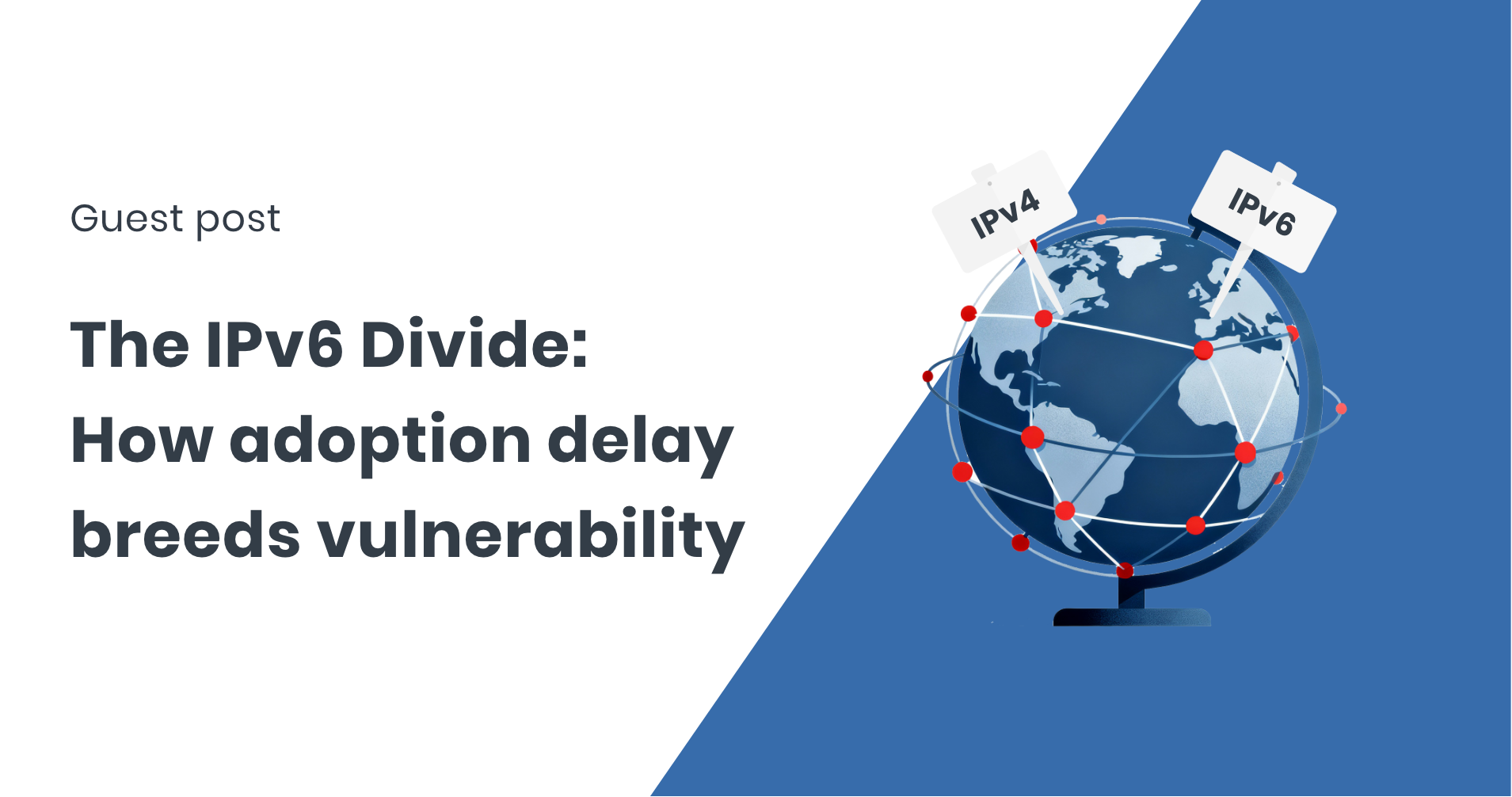
Guest post by Vincentas Grinius, Co-Founder at IPXO
The shift to IPv6 has escalated into a matter of national security, as nations lagging in adoption are increasingly exposed to cyber threats and diminished control over their digital infrastructure due to the limited availability of IPv4. With IPv6-only environments becoming more common, reliance on IPv4 may lead to slower connectivity, deepening the digital divide and potentially worsening economic disparities. In this geopolitical landscape, moving to IPv6 serves as a critical step toward maintaining digital independence.
As global tensions continue to rise, the vulnerability of digital infrastructure is drawing increased attention. For instance, a Chinese ship disrupted undersea internet cables in the Baltic Sea last year – an event that highlights a broader trend, with cybersecurity professionals reporting a growing frequency of deliberate digital disruptions. Compounding this is an unprecedented surge in data breaches. Against this troubling backdrop, the move to IPv6 is no longer merely a technical progression, it’s becoming a strategic imperative tied to national security and geopolitical influence.
The cyber threat environment in 2025 is defined by more advanced attack methods, the rise of AI-driven criminal activity, and persistent threats targeting digital systems. Security professionals around the world emphasise that even small inefficiencies can carry serious consequences. A prime example is the delay in adopting IPv6, which can leave countries vulnerable to strategic setbacks in connectivity and digital infrastructure, ranging from heightened cybersecurity threats to diminished control over their digital assets.
Countries that delay transitioning to IPv6 often remain dependent on IPv4-based systems, which can hinder their digital sovereignty due to the limited availability of IPv4 addresses. This shortage forces reliance on technologies like NAT (Network Address Translation), which restricts direct peer-to-peer communication – an essential requirement for modern innovations such as 5G networks, the Internet of Things, and edge computing.
When countries don’t have enough IP address resources, they often end up depending on cloud and network services owned by foreign providers. That weakens their digital independence and puts up major roadblocks in digital trade, especially when it comes to fully joining IPv6-powered systems. Relying on IPv4 infrastructure also increases the risk of facing sanctions or being disconnected from critical routing networks.
The risk of deepening the digital divide
A growing number of nations, among them the U.S., China, Germany, Brazil, and India, are pushing forward with IPv6 adoption as a way to strengthen and modernise their digital infrastructure. Both public institutions and private organisations are taking action, introducing policies, incentives, and support mechanisms designed to speed up the global move away from IPv4 and toward IPv6.
Take India, for instance: it completed the transition of all government departments to IPv6 by the end of 2022, setting a benchmark for national-level adoption. Meanwhile, China is aggressively pursuing its IPv6 goals, targeting at least 60% of internet traffic to run on IPv6 by the close of 2025. Such plans are essential for both the development of digital infrastructure and for achieving security advantages
IPv6 unlocks new possibilities for implementing advanced features, something increasingly vital in an era marked by constant cyber threats. More importantly, the rise of IPv6-only networks may leave users who still rely on IPv4 facing reduced performance or limited access to parts of the internet. This growing disconnect threatens to widen the digital divide, fueling economic disparities and obstructing participation in global digital trade. Government systems that continue to rely on outdated infrastructure may also find themselves more vulnerable to security breaches.
Delaying the shift to IPv6 can significantly hinder a nation’s progress in developing robust digital infrastructure. With every additional connected device, the demand for IP addresses grows, and the ageing IPv4 framework is no longer equipped to handle it. This shortfall creates roadblocks to innovation. Moreover, as the global internet ecosystem increasingly adopts IPv6, systems that rely solely on IPv4 face the danger of becoming outdated and potentially excluded from modern routing networks.
It’s important to recognise that IP address resources, and the protocols that manage them, serve as strategic assets. IPv6 represents more than just a technological improvement. It’s a fundamental tool for asserting digital sovereignty. During this phase of transition, IP leasing has become an essential strategy, offering organisations a practical way to navigate the shift from IPv4 to IPv6 and maintain operational continuity.
About the author
Vincentas Grinius is a co-founder at IPXO, an all-in-one automated IP address platform offering secure, compliant, and flexible solutions to drive internet sustainability and help businesses scale. Vincentas has a long track record and 10+ years of experience combining today’s technologies and making IPXO the first IPv4 lease and monetisation platform in the market. The platform brings RIRs, LIRs, and small to large enterprises together to share IPv4 resources and to make the Internet much more sustainable.
About FastNetMon
FastNetMon is a leading solution for network security, offering advanced DDoS detection and mitigation. With real-time analytics and rapid response capabilities, FastNetMon helps organisations protect their infrastructure from evolving cyber threats. For more information, visit https://fastnetmon.com